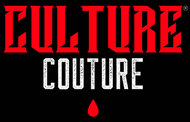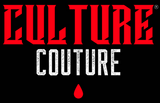Chris Gibbs has had a front row seat in witnessing streetwear culture’s dynamic evolution for almost three decades. From working as a retail employee at Union New York in 1996 under Supreme founder James Jebbia to transitioning to the retailer’s Los Angeles location when it was owned by Undefeated’s Eddie Cruz and eventually helming the entire entity, Gibbs is a living streetwear legend who’s utilized his thorough knowledge of culture, trends and storytelling to manifest Union’s own in-house imprint. “I’m a proud streetwear designer”, Gibbs tells Hypebeast. That’s something I’m trying to champion every day by keeping my eyes and ears open to the streets.” And the brand’s signature sensibilities have been permeating through its ever-growing catalog of Nike and Jordan Brand collaborations, the latter of which is expanding by one entry this month.
After having a successful run of team-ups in 2022 that included its Dunk Low “Passport Pack” and range of Cortez collabs, Gibbs and his crew are poised to deliver their newest initiative: a Union x Air Jordan 1 Low KO and apparel capsule collection. Debuting the new lifestyle silhouette, Union has “White” and “Sail” colorways on deck that serve as a love letter to Black and Latino fashion culture from the ‘80s in New York. Each pair is brought to life with throwback-inspired color palettes, detachable Swooshes, concealed monogram patterns and chain-adorned shoe boxes. The range is scheduled to drop via Union LA online on February 2 while a SNKRS release will follow on February 4. The shoes will cost $150 USD a pop.
Ahead of the launch, Chris Gibbs sat down for a one-on-one conversation with Hypebeast to discuss debuting the streetwear Air Jordan 1 KO Low, how Union LA has developed its own design language, his muses for this new Jordan collaboration and more.
Union has been working with Nike since 2005. How has your collaborative mindset evolved over time?
My first collaboration with Nike was the “Clerk’s Pack” from ‘05, and since then, what we’re able to accomplish with collaborative projects has changed quite a bit. Back then, it was a much smaller program, the units were low, the release was exclusive to us and streetwear hadn’t established itself as the dominant force that it is today. Now we have global marketing initiatives, and instead of just editing a shoe’s colors or fabrics, we can now create full collections that include apparel and accessories.
Do you feel like you’ve established your own unique design language with these collaborations?
Union as a brand that makes its own product is a relatively new concept. From a collaborative perspective, we’ve been able to establish that design language a little easier. There are several details that we’ve continued throughout our collections with Jordan Brand such as the zigzag stitch and our tab labels. It’s easier with Jordan because we’re starting with an existing template. We try to be responsible when we edit and pay homage to the original design — but also try to introduce something new.
Not many collaborative partners get the opportunity to debut an entirely new model. How did the idea of working on an Air Jordan 1 KO Low come about?
The conversation started during a trip that I took to Portland two years ago, where we were doing a review of the past collections and plotting what we wanted to do next. One of the team members showed me an early sample of the Air Jordan 1 KO Low and I was blown away. There had already been conversations around us doing something simple and classic with the original Air Jordan 1 KO, but after seeing the Low, I expressed interest in them and they were on board.
I knew that we were going to introduce this shoe, and I thought the responsible way to do that would be to present at least one version in a very classic way. Our past designs have been a little more disruptive, but we decided to ease up for this project, at least for the canvas iteration. Air Jordan 1 KOs, you’ll notice that they are made of canvas and have a distinct binding detail on the seams to prevent fraying. We decided to keep that detail on the leather version as a nod to the original.
Walk me through all of the sneaker’s details and touch on why they were important to include.
We retained our zigzag stitch and our flag labels that we’ve had on every shoe because that’s what makes it our collaboration. We often use the zigzag stitch as a separator for fabrics or colors, so on the canvas version you’ll notice that the tongue transitions from canvas to suede. The collection is a nod to ‘80s sneaker culture so the colors are of that time. But we also bridge its design into contemporary sneaker culture by adding removable Swooshes so that you can personalize them as well as our own monogram in the background. It’s simple but there’s a lot going on at the same time, and that was admittedly a tight rope to walk.
The genesis of this design is from the mid to late ‘80s era of normcore where there wasn’t a lot of fashion being made for Black and Latino culture. They had to take classic apparel pieces and make it their own, but you’d also find them rocking a lot of gold chains, so we had one made for this campaign to use in our marketing campaigns and on the box.
“There’s a saying that “you are what you know” and that’s definitely what I know.”
The full range is inspired by fashion sensibilities from Black and Latino culture in the ‘80s. Are there any specific style muses that you turned to for inspiration for this new range?
I was introduced to sneakers in the ‘80s, so when I didn’t have to look too hard for inspiration since I still have my record collection from that time. I was inspired by the style found on old record covers from EPMD and Public Enemy as well as magazines like Word Up! Magazine. Every fashion decision that I make today is informed by that era and burned into my brain. There’s a saying that “you are what you know” and that’s definitely what I know.
It’s never just shoes with Union. There’s always a lesson or a message. Why is that important to you?
I’m trying to honor the privilege I have of being able to do the things I do. I came up in an era where product wasn’t designed for me and I had to kind of figure it out on my own. I now own Union, but I didn’t start Union. And when I first found it, I was blown away because it was the first place I saw with clothing that felt like it was made for me. That was really important to me because up until then, it didn’t seem like I mattered to the world of fashion. And now fast forward — to be in a place where I can do collaborations with Jordan is an honor and a privilege. I want to share that with people so they know that it’s something that they can do as well.
“Our collections walk the line between directional and consumable, and that is a direct result of me never attending fashion school.”
Union takes pride in striking a balance between crafting directional and digestible products, especially in terms of fabrics, drape and tailoring. Are there any highlights within this collection’s apparel that you’re most proud of?
There are two pieces in particular that I want to highlight. The first is the tracksuit which is modeled after the tracksuits that I’d see people wearing in Word Up! Magazine. We decided to do that in a boucle material instead of a velour and I love the way it turned out.
Another piece I love is this knit sweater that we did. It’s a homage to the past and kind of feels like it’d be your grandma’s sweater. When the first prototype came out, it was done with the print right side out, but it didn’t have much of a bite to it. To counter that, we moved the inside knit to the outside so you could capture that marl effect and designed it with our medallion logo.
How is this collection a product of all that you’ve learned and all that you’ve seen?
Our collections walk the line between directional and consumable, and that is a direct result of me never attending fashion school. My schooling was working in retail. I feel like you get this very direct and granular course on what people like and where the fashion trends are going. You get it at the knife’s edge because it’s happening right in front of your eyes. And so what I’ve tried to do with my career and with these Jordan collaborations is always keep one eye to the market and to retail. I want to have my creativity and I want to push the envelope, but I’m also grounded in what I see happening in retail, and I’ve specifically designed through those two lenses.
Are we gonna see another “what color is an orange” password situation for this online release?
. I’m going to keep that one close to my chest but I will say that all of those weird questions and prompts are so that we can have a democratic release to make it fair for everybody.
What is considered streetwear?
What is streetwear?
The fashion industry defines streetwear as fashionable, casual clothing worn by followers of popular culture. The majority of these followers are under 30, live in urban areas, and belong to a subculture group (ex. hip-hop music fans).



